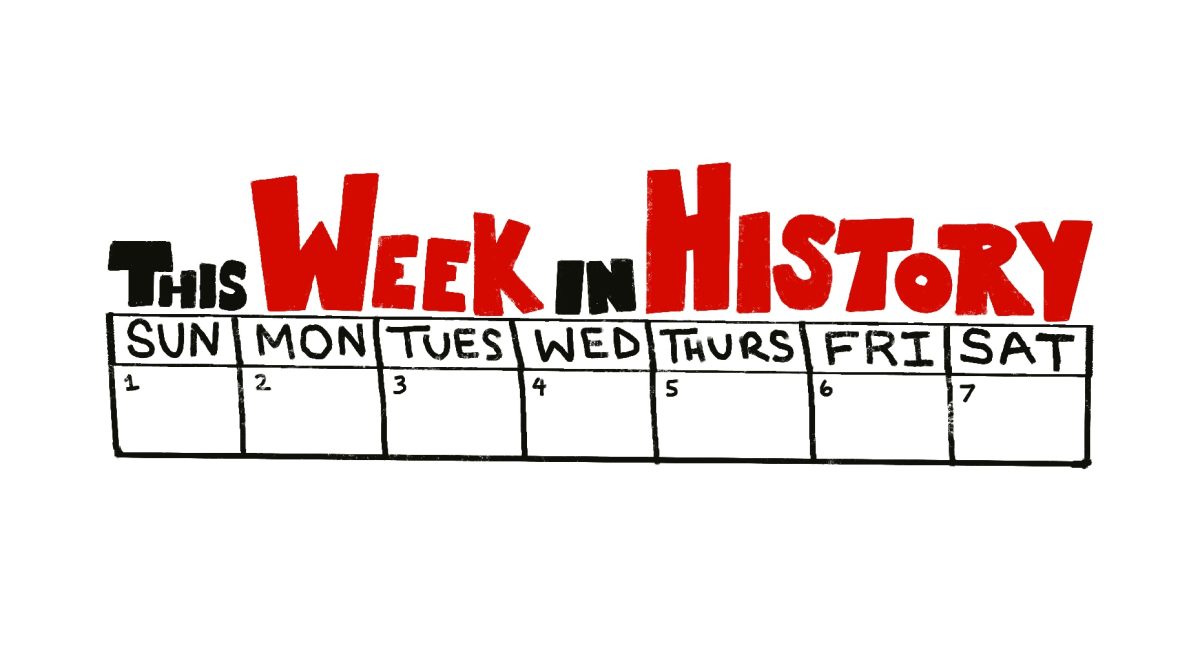Find out past events from the days of this week; births, deaths and important moments from all corners of the globe and all eras of history.
Sept. 12, 1953: John F. Kennedy married Jacqueline Lee Bouvier.
The former U.S. President and First Lady were married in Newport, Rhode Island in a ceremony with over 800 guests. The two met at a dinner party in May 1952 and were engaged shortly after. The two were married for 10 years until the death of President Kennedy. The couple had four children, two of which died in infancy. Beloved as a young and sociable First Lady, Kennedy was a supporter of the arts and was celebrated as a fashion icon who guided the renovation of the White House. President Kennedy was the first Roman Catholic President, sworn in on Jan. 20, 1961. He was assassinated on Nov. 22, 1963, in Dallas, Texas while on a motorcar parade with his wife, making her a widow at age 34.
Sept. 13, 81: Roman Emperor Titus died.
Titus Vespasianus Augustus was born to Emperor Vespasian on Dec. 30, 39 C.E., and was Emperor of Rome from 79 C.E. until his death at 41 years old in 81 C.E. He is best known as the Conqueror of Jerusalem, which he captured in September 70 C.E. during the First Jewish-Roman War. The war sought to end Jewish resistance to Roman rule in the province of Judea and it was during this siege that the Second Jewish Temple at Jerusalem was destroyed. To honor his victory, the Arch of Titus, still standing today, was put up in the Roman Forum in Rome.
Sept. 14, 1901: The 25th President of the United States, William McKinley, died due to assassination.
William McKinley was born on Jan. 29, 1843, in Niles, Ohio and was president of the United States from 1897 until his death in 1901. During his presidency, the U.S. went to war against Spain in 1898 which ended with Spain ceding the territories of Puerto Rico, Guam and the Philippines to the United States. The territory of Hawaii also lost its independence and was annexed by the U.S. at this time. McKinley was shot at the Pan-American Exposition in Buffalo, New York by anarchist Leon Czolgosz on Sept. 6 and died eight days later of gangrene caused by his wounds at age 58. Czolgosz was executed by electric chair on Oct. 29 of that same year and McKinley was succeeded as president by Vice President Theodore Roosevelt.
Sept. 15, 1959: Nikita Khrushchev became the first Soviet leader to visit the United States.
After the death of Joseph Stalin in 1953, the Soviet Union suffered a power vacuum that Nikita Khrushchev eventually filled. He visited the United States in 1959 with his family at the invitation of President Dwight D. Eisenhower, at the height of the Cold War between their two nations. His tour of the US was a media sensation, lasting 13 days, during which he pet a pig in Maryland, had his first hot dog in Iowa, had dinner with Frank Sinatra and Marylin Monroe in Los Angeles and had a summit meeting with Eisenhower in Washington before heading home to Moscow. The trip was a step towards more amicable Soviet-U.S relations and Khrushchev’s only disappointment was that he did not get to visit Disneyland due to security concerns.
Sept. 16, 1810: Grito de Dolores started the Mexican War of Independence.
Following the betrayal of a revolutionary plot against Spain, the parish priest of Dolores, Miguel Hidalgo y Costilla, armed the people and gave a speech demanding the death of the Spaniards and the praise of La Virgen de Guadalupe on Sept. 16, 1810. It is celebrated as the beginning of the Mexican War of Independence, with the President of Mexico recreating it annually. Hidalgo y Costilla was executed by the Spanish only a year later, on July 30, 1811, but the war of independence continued for a decade more, coming to an end in 1821 with the Treaty of Cordoba and the Declaration of Independence of the Mexican Empire.
Sept. 17, 1916: British novelist Mary Stewart was born.
With a career spanning four decades, Stewart is best known for launching the romantic mystery genre into international spotlight. Born Mary Florence Elinor Rainbow, the British novelist characterized her books with daring, highly educated female protagonists. Similar to her highly educated female protagonists, Stewart graduated with honors from Durham University in 1938, got her master’s degree in 1914 and pursued a career in teaching during World War II. She married another academic, Frederick Stewart, in 1945 and took his name as her pen name. She died at age 97 on May 9, 2014.
Sept. 18, 1912: Chilean activist, Maria de la Cruz Toledo was born.
A journalist and writer of novels and poetry, de la Cruz dedicated most of her early years to the movement for women’s suffrage in Chile, founding the Feminine Party of Chile in 1946, which sought to inform women of their rights and encourage the government to grant them the right to vote. The movement saw victory in 1949 and in 1953, de la Cruz became the first woman to be elected into the Chilean senate. She was removed from Congress only a few months later after a smuggling conspiracy threatened her removal, although investigations were unable to prove her guilt. She died in Santiago, Chile at age 83 in 1995.
Sept 19, 1985: An earthquake devastated Mexico City.
The epicenter of the magnitude 8.1 earthquake originated in the state of Michoacán to the west of Mexico City. The earthquake’s destruction reached its heights in the capital city, which has soft soil foundations built on the dry bed of the drained Lake Texcoco. An aftershock of magnitude 7.5 struck the area the following day, adding to the destruction. Over ten thousand people were killed as a result of the earthquake, with thousands more injured and around 250,000 left homeless. Over 400 buildings collapsed, including part of the Hospital Juarez de Mexico, killing over a thousand patients and hospital workers. In the aftermath, people blamed the lax building safety codes and the president’s inadequate response to the disaster for the scale of the devastation.








